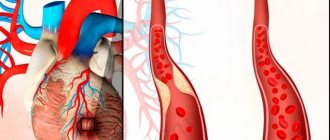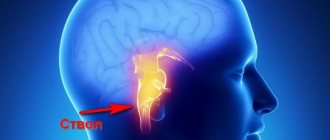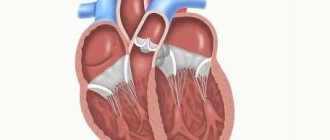Numerous studies have proven that smoking reduces life expectancy by 10-15 years. A bad habit provokes the development of many diseases of the cardiovascular system.
So, if your heart hurts when smoking, you should not ignore this alarm bell. It is necessary to undergo a medical examination as soon as possible, find out the cause of the problem and, if necessary, begin treatment.
- 5.1 Can your heart hurt if you quit?
The effect of smoking on the cardiovascular system
During smoking, harmful substances contained in tobacco smoke enter the lungs, from where they penetrate the blood and are carried throughout the body. They negatively affect the condition of blood vessels and heart muscle.
The harmful effect of nicotine on the cardiovascular system is that it causes a sharp release of adrenaline, under the influence of which the blood vessels narrow. The substance also affects the structure of the blood. The platelets stick together and the blood becomes more viscous. This causes increased blood pressure, increased stress on the heart, and increased heart rate.
Nicotine also disrupts lipid metabolism, causing the level of fats in the blood to increase. The resulting cholesterol plaques can lead to narrowing and blockage of blood vessels.
Not only nicotine, but also other substances in tobacco smoke have a detrimental effect on the state of the cardiovascular system. In particular, passing with blood through the vessels, they damage their walls, making them less smooth. Because of this, the resulting plaques do not slip, but cling to irregularities and are easily attached to the walls of blood vessels. The lumen of the vessel becomes narrower, the walls lose elasticity and become fragile.
Carbon monoxide contained in cigarette smoke reacts with hemoglobin. The resulting substance is unable to transport nutrients and oxygen. As a result, the heart experiences oxygen starvation and a deficiency of nutrients. Considering the fact that all this occurs against the background of functioning under conditions of extreme load, the heart muscle gradually fails, and heart failure develops.
Trying to adapt to constant overexertion, the body begins to build muscle tissue on the heart. As a result, the smoker's heart becomes much larger than that of a healthy person, and this in turn provokes an even greater deficiency of oxygen and nutrition.
Pathological changes in the body of smokers
You can also read: Smoking and blood vessels
The effect of nicotine on the body is not limited to changes in blood composition. Under the influence of tobacco smoke, gradual destruction of vascular walls occurs, deterioration of blood supply to the heart muscle. At the first stage, there is a narrowing of blood vessels and a decrease in the elasticity of their walls due to atherosclerotic changes. This leads to a deterioration in blood circulation and an increase in the need of the heart muscle for oxygen. However, at the same time, the rate of blood flow to the myocardium decreases, and this becomes the cause of oxygen starvation (ischemia) of the tissues.
Also, a number of characteristic changes occur in the smoker’s body, which are interrelated with each other and are involved in the development of heart failure.
- Nicotine provokes the rapid formation of free radicals. These are chemical compounds that enter into lipid peroxidation reactions. They are dangerous for humans because they lead to the destruction of cell walls and cause premature aging.
- In the blood plasma, the concentration of C-reactive protein (a mediator of the acute phase of inflammation), as well as cysteine, homocysteine and other substances increases. Taken together, this picture poses a threat to heart and vascular diseases. Indicators may return to normal limits 3-4 months after quitting smoking.
- The concentration of folate in the blood sharply decreases, a substance that prevents the formation of blood clots. At the same time, platelet adhesion processes are accelerated.
Smoking is one of the causes of myocardial infarction - this is preceded by a chronic increase in blood pressure
According to statistics, smoking is one of the main factors affecting the functioning of the cardiovascular system. Nicotine and other components of tobacco smoke reduce the concentration of normal healthy cells, while simultaneously provoking a number of pathological processes. One of the most dangerous consequences is myocardial ischemia, or oxygen starvation of the heart muscle tissue. In smokers, attacks of coronary artery disease occur somewhat more often and last up to 10-12 times longer than in people leading a healthy lifestyle.
Possible diseases
When wondering whether your heart can hurt from smoking, you need to clearly understand and accept that this is not only possible, but also more than likely. Smoking is one of the main causes of cardiovascular diseases such as:
- myocardial infarction;
- hypertension;
- cardiac ischemia;
- arrhythmia.
Also, a bad habit can cause the development of cancer.
Myocardial infarction
The influence of tobacco and tobacco products has a detrimental effect on the performance and condition of the heart. The consequences are spasms and vasoconstriction, hypoxia, increased blood viscosity, and a high risk of blood clots. All this contributes to disruption of the blood supply to the heart muscle. As a result, an area may form where blood, and therefore oxygen and nutrition, practically do not flow. It begins the process of tissue death, that is, necrosis.
Heart attack
Most often, myocardial infarction develops very quickly against the background of acute thrombosis of the coronary arteries. The heart of a smoker can hardly withstand such a load, so smokers die from a heart attack twice as often.
Cardiac ischemia
Coronary heart disease is a more general pathology than a heart attack, but it is caused by the same reasons. A smoker's heart operates in a mode of insufficient blood supply. The balance between the supply of oxygen and nutrients from the bloodstream and the needs of the heart muscle is disrupted. As a result, organic and functional damage to the myocardium occurs. If a smoker is diagnosed with hypertension, the risk of developing coronary artery disease increases.
Depending on how nicotine affects the heart, there can be either an acute attack of coronary artery disease (myocardial infarction) or a chronic course (angina pectoris).
Arrhythmia
Arrhythmia is a disorder of the heart rhythm. Under the influence of negative factors, the heartbeat can speed up or slow down. One of the most common causes of arrhythmia is smoking.
Toxins contained in tobacco smoke enter the bloodstream and cause an immediate reaction in the body. Trying to get rid of toxic substances as quickly as possible, the defense system provokes an increase in blood flow speed, and therefore an increase in heart rate. Regular functioning under conditions of increased stress leads to disruptions in the functioning of the heart muscle. Over time, even slight physical effort can cause arrhythmia.
Smoking with an existing arrhythmia is very dangerous, as it can provoke the development of severe complications.
Smoking and tachycardia
Tachycardia is a type of arrhythmia in which the heart beats much faster than normal. The pulse rate can increase by 15-20%, which negatively affects not only the condition of the heart muscle, but also the body as a whole.
Tachycardia resulting from smoking is accompanied by symptoms such as:
- weakness, dizziness;
- lack of air;
- chest pain;
- anxiety, feeling of fear;
- in severe cases, loss of consciousness.
Also, with tachycardia, a person clearly feels the beating of his heart, which does not happen in a normal state.
Heart cancer
One of the most severe manifestations of how smoking affects the heart is the development of an oncological process in tissues. Since tobacco smoke contains carcinogens, they can cause a pathological process in any internal organ, including the human heart. To be fair, it should be noted that a tumor rarely develops directly in the heart. More often, the organ suffers from metastases, the focus of which is cancer of other organs.
Cancer
The harm of tobacco
What are “tobacco products” and are they really that harmful? Or maybe it’s true that their harm is “somewhat exaggerated” and this is harmless entertainment and a way to “relax”? This is nothing more than a paid and carefully promoted lie. And the lies of tobacco corporations are everywhere, starting from the very composition of this so-called product. You will not find a real description of this product in the composition of cigarettes. The entire contents of cigarettes are described with the short word “tar.” And what is this “mysterious resin”? This word hides more than four thousand toxic components that are extremely harmful to health, including arsenic, benzene, polonium, formaldehyde, ammonia, hydrogen sulfide, carbon monoxide, dioxins, as well as radioactive isotopes of potassium, lead and radium. Can we then say that smoking is a harmless way to “relax”? And the trouble is that a smoker poisons not only himself, but also everyone around him. Including your children.
Tobacco is a full-fledged drug. Most smokers know or understand the consequences of smoking. A statistical study conducted in 2009 in Chile shows that 38% of smokers are aware that smoking leads to cardiovascular diseases, but this does not prevent them from continuing to smoke. Today, on almost every pack of cigarettes you can see a scary inscription with a colorful drawing of lung cancer or something similar. Every time a person takes a pack out of his pocket, he sees the possible future consequences of his addiction, but this does not stop almost anyone, from which we can conclude that drug addiction to tobacco is stronger than common sense.
The World Health Organization has been trying to combat tobacco smoking for a long time. The corresponding convention was adopted back in 2005. But, unfortunately, the WHO has much less real leverage over the current situation than tobacco corporations. And the truth about the dangers of smoking still looks dim against the backdrop of the bright propaganda of smoking, not only in the form of explicit, but also in the form of hidden advertising - in films, TV series, music, and so on. The truth about the dangers of smoking is that there is not a single organ or system in the human body to which the smoking process does not cause terrible harm.
Smoking with congenital heart disease
Congenital heart disease is a pathology that accompanies a person from the moment of birth. During the development of the fetus in the womb, the organ is formed incorrectly, as a result of which the blood supply to the heart is difficult, and it works under increased load. A person with a similar diagnosis has a weak immune system, often gets sick, and physical activity is contraindicated for him. It is clear that in this condition, any factors that can negatively affect the functioning of the heart, including smoking, are contraindicated.
Depending on the severity of the disease, the course of the disease can vary. Many people with congenital heart disease live to an advanced age. But for this you need to observe all restrictions, avoid stress, overwork, intense exercise, follow a diet and, of course, give up bad habits - cigarettes and alcohol.
Is it possible to restore lost health?
Partial or complete restoration of the heart and blood vessels is quite possible if you stop smoking and take care of your own health. The cardiovascular system generally responds positively to the cessation of nicotine intake - the first changes are noticeable within 20 minutes after smoking the last cigarette. Let's look at what happens to the circulatory system when you quit nicotine:
- 1 - 1.5 months. – improvement of qualitative and quantitative indicators of platelets and leukocytes in the blood
- 2 months - the cellular composition of the blood is completely renewed
- 3 months – renewal of vascular cells, increasing their elasticity and tone
- 6 months — the blood test corresponds to the norm of a healthy non-smoker, the heart muscle tissue is intensively restored, its blood supply improves
- 1 year - the risk of myocardial infarction and stroke is reduced by 2 times
The listed processes occur independently under the condition of quitting nicotine. To speed up recovery processes and improve well-being, it is recommended to follow a daily routine with the exception of overwork, proper nutrition and optimal physical activity. After giving up smoking, you should not abuse alcohol - this addiction is also detrimental to your overall health.
To stabilize the condition of blood vessels and the heart, drug therapy is indicated:
- drugs that thin the blood and strengthen blood vessels (Aspirin, CardiASK)
- metabolic agents (Riboxin, Cytoflavin)
- anti-sclerotic agents (Berlipril, Clofibrate)
- drugs that reduce bad cholesterol (Traykor, Akorta)
- antihypertensive drugs (Amlodipine, Bisokard)
What happens if you suddenly quit smoking?
Many people prefer to quit smoking immediately once and for all, although not everyone succeeds. This option is more difficult to tolerate, but weaning and recovery of the body occurs faster. You need to understand that at the initial stage, refusal is accompanied by some psychological and physiological manifestations, such as:
- sudden change of mood;
- irritability;
- inability to concentrate, slow reaction;
- lethargy, decreased performance;
- headache;
- pressure surges;
- sore or sore throat, cough;
- elevated temperature;
- insomnia at night and drowsiness during the day;
- loss of appetite.
It happens that after quitting smoking your heart hurts or tingles for some time.
Prevention methods
No preventive measures can neutralize the harm caused by smoking. One of the main conditions for complaints about the condition of the heart and blood vessels is getting rid of the addiction. This is necessary during the treatment of coronary disease, atherosclerosis and other acute and chronic diseases of the cardiovascular system, as well as during the recovery period after heart surgery. Patients are advised to spend a lot of time in the fresh air, lose excess weight, eat right - all these methods will allow blood counts to return to normal in the near future and recover from long-term smoking.
Can there be problems after refusal?
The body reacts differently to quitting smoking. In some cases, after a person quits smoking, he begins to experience tachycardia or pain in the heart area. This may be a temporary withdrawal symptom or indicate a serious heart condition.
To give up smoking
Can your heart hurt if you quit?
There may be several reasons why a person’s heart hurts after he quit smoking:
- without the harmful effects of nicotine, blood vessels dilate, pressure drops, the load on the vascular system increases, which causes dizziness and chest pain;
- the body is gradually cleansed of toxins, the oxygen content in the blood becomes unusually high for the body, a sharp increase in oxygen in the blood causes heart spasms;
- the stress experienced by a person who has quit smoking can cause arrhythmia or angina, which is characterized by pain in the chest;
- exacerbation of pulmonary diseases;
- in case of gastrointestinal diseases (colitis, cholecystitis), the pain syndrome can “transition” to the heart area.
Attention! If heart pain does not go away a few days after quitting cigarettes, you should consult a doctor.
Why does it tingle when thrown?
Sometimes after quitting smoking, the heart tingles periodically. Most often, this is due to a restructuring of the cardiovascular system, which has functioned for a long time in toxic conditions and has adapted to them. Now the heart and blood vessels have to be rebuilt in order to function normally without the presence of harmful substances in the body.
Most often, tingling in the heart area in those who quit smoking is associated with a change in blood supply, lower blood pressure and higher oxygen content.
Why should you give up your habit?
Smokers often complain of chest pain and note that their heart beats faster after smoking a cigarette. This is a signal that the condition of the organ is concerning. Doctors conducted a study and came to the conclusion that a person who has had a heart attack and a smoker experience the same negative changes in their blood .
There are 3% of adhesive red blood cells in the blood of people who are not addicted to a bad habit. For those who have had a heart attack and for smokers – 10%. The attraction to tobacco in those with heart problems increases the risk of death by 40%. That is, every fourth smoker with a heart condition brings his own death closer .
Remember! There is no such thing as safe smoking. Even one cigarette can cause irreparable harm to a diseased heart, even to the point of cardiac arrest.
In addition to diseases of the cardiovascular system, those with a harmful addiction to nicotine develop a whole bunch of ailments. The lungs, liver, organs of the gastrointestinal tract, and skin are affected. Smokers look older than their age and have an unhealthy complexion.
What to do to restore your heart after smoking?
The following recommendations will help restore the heart and blood vessels as quickly as possible after quitting cigarettes:
- review your diet, eliminate fatty and spicy foods, add fresh vegetables, fruits, and dairy products;
- monitor your weight;
- get enough sleep;
- do not overwork;
- go in for sports, avoiding heavy physical activity (various cardio training options are perfect);
- control existing chronic diseases (it is best to undergo a full medical examination);
- Follow all doctor’s instructions, regularly take all prescribed medications, and do not self-medicate.
Proper nutrition
If irreversible processes have not yet begun in the body, then over time it is possible to practically eliminate the harm caused by smoking to the heart and other organs.
Typical diseases of a smoker
Most smokers prefer not to think about the state of their cardiovascular system and not worry about the risk of heart attacks and coronary heart disease, which they think only affects the elderly. But even the youngest smoker, after several years of regular smoking, develops such typical diseases as:
- hypertension - increased blood pressure is typical for all smokers; due to nicotine, which causes vasospasm, blood pressure increases, first occasionally, and then constantly. The role of smoking in the development of early arterial hypertension has already been proven, and among older smokers, regular smoking becomes the most common cause of hypertensive crises;
- coronary heart disease - it is enough to smoke 5-10 cigarettes daily, and you are guaranteed to have coronary heart disease. Gradually, there are more and more areas of ischemia in the heart muscle and the smoker’s heart begins to malfunction. What this will lead to – a heart attack or constant pain in the heart depends on the length of time and intensity of smoking;
- myocardial infarction - today smokers from the age of 20 suffer from myocardial infarction. Microinfarctions are most often not diagnosed, but the risk of dying from a myocardial infarction increases by about 3 times.
- arrhythmias - smoking can cause not only a heart attack and hypertension, but also atrial arrhythmia. Nicotine, acting on nerve receptors in the tissues of the heart, can disrupt the correct rhythm of the heart, causing the atria to contract in a random rhythm. Moreover, arrhythmia most often develops in young smokers, turning their life into a real nightmare - any physical or nervous shock can be the last.
DO YOU WANT TO QUIT SMOKING?
Then come to us for a marathon on quitting cigarettes. Don't just quit smoking, don't quit.
Prevention
You can significantly reduce the risk of heart pain and the development of cardiac and vascular pathologies if you completely stop smoking. In addition, you can take some additional measures:
- minimize alcohol consumption (a drunk person reaches for a cigarette out of habit and cannot always control himself);
- avoid passive smoking;
- spend more time in the fresh air;
- move more;
- Avoid stress, try to maintain mental balance.
Attention! At the first sign of heart problems, you should immediately consult a doctor. Then the disease can be detected at an early stage.
How does smoking affect the heart and blood vessels?
Nicotine causes negative changes in the cardiovascular system within the first minute of smoking. From this moment on, the frequency of contractions of the heart muscle increases by 30%, the concentration of carbon monoxide in the blood increases, blood pressure increases and the tone of the vascular walls decreases. With a long history of addiction, the listed conditions become chronic.
Nicotine, while increasing blood pressure, simultaneously increases the secretion of agents that damage the endothelial cells of the heart and blood vessels, which negatively affects their strength. The heart muscle and blood vessels wear out faster, the affected muscle fibers do not have time to regenerate, which leads to impaired systemic circulation, thrombus formation and ischemia.
What changes occur in blood vessels after quitting smoking?
Quitting smoking does not mean getting rid of health problems, because the longer the experience of nicotine addiction, the more the tissues and walls of blood vessels suffer.
When you give up an addiction, the body’s recovery occurs gradually:
- in the first week, the vascular endothelium is restored, blood pressure normalizes and an expectorant cough appears;
- after 1 month, complete cleansing of accumulated toxins and chemical components occurs, and well-being improves;
- After 1 year, the former smoker notes an increase in muscle mass, strengthened immunity and a lack of lethargy.
Microcracks in the endothelial layer are healed.
The blood becomes thinner and the risk of blood clots is significantly reduced. The heart works without overload, pumping the usual volume of blood, and accordingly the osmotic pressure does not increase.
(Visited 1 times, 1 visits today)
Smoking for heart problems in men and women
Unfortunately, diseases can develop without smoking . They may already be present and caused by this addiction. What happens in the body if the harmful effects of tobacco smoke are added to existing diseases?
Smoking can both provoke the appearance of diseases and aggravate the course of existing ones.
Arrhythmia
This is a heart rhythm disorder. It may be associated with tachycardia (increased pulse and heartbeat) or bradycardia (when, on the contrary, the body slows down the heart).
If such conditions are caused by sports (increased) or relaxation (decreased), then they can be considered normal. However, if signs of arrhythmia appear for no reason, and especially after smoking, this is a reason to urgently consult a doctor.
Cardiac ischemia
In this case, we are talking about obstruction of blood flow through the vessels. This may be due to their narrowing or blockage . We have already found out that smoking provokes these phenomena, incl. the appearance of atherosclerotic plaques.
If the disease has already developed, interruptions occur, further smoking can aggravate the situation, up to complete blockage of the blood flow. This can lead to heart attacks, strokes and sudden death.
Meet Alena. And she hasn't smoked for over a year! Alena quit smoking four times, but without success. Then she bought Monastery tea and never returned to the bad habit.
For congenital heart disease
This is not an acquired disease; a person gets it from birth. People who are faced with this disease spend their whole lives fighting it, but if in such circumstances they smoke and do not give up this monstrous habit, resistance may turn out to be useless, all efforts will be nullified.
Heart cancer
Heart tissue, like others in the body, is susceptible to cancer. Tobacco smoking contributes to the development of diseases and introduces carcinogens into the body, which provoke these terrible ailments.
Heart cancer is a colloquial name for oncological processes in this organ. The disease rarely appears directly in the heart; more often it is affected by metastases, the focus of which is the tissue of other organs.
Smoking can cause malignant tumors!
What does a cigarette contain?
Cigarettes contain a huge amount of harmful substances. Moreover, there are even more harmful toxins in cigarette smoke, since some substances decompose into several parts during combustion.
The main substances that have a negative effect on the body include:
- resin;
- nicotine;
- gaseous toxins - carbon monoxide (carbon monoxide), nitrogen oxide, hydrogen cyanide.
Resin is a mixture of a large number of toxic substances that looks like a sticky dark residue. When smoking, smoke enters the mouth, which then condenses and settles in the lungs as tar. In this case, the processes of blood oxygenation and lung cleansing are disrupted, constant irritation of receptors occurs, and a cough appears.
Nicotine has a pronounced effect on the body and penetrates well through the blood-brain barrier. The ability to penetrate the brain leads to the formation of mental dependence on nicotine. It is quickly eliminated from the body, so a person needs to take an additional dose to maintain nicotine levels. The most dangerous nicotine is in free form, that is, it appears when smoking.
The effect of toxic gases depends on their type. Each gas has a specific effect on the body.
On a note! Many people believe that in order to avoid the health effects of cigarettes, they can be replaced with hookah. But that's not true. Inhaled hookah smoke also contains nicotine and toxic substances that affect the cardiovascular system.
Smoking is harmful to the heart
As is known, smoking provokes the development of chronic hypoxia and metabolic disorders in the body. The heart and lungs of a smoker are most at risk of developing various diseases.
Smoking harms the heart, it leads to the formation of the following pathologies:
- Hypertension. When tobacco smoke enters the body, there is a sharp increase in the level of adrenaline, which narrows the walls of blood vessels. This causes the heart to beat rapidly after smoking, as well as increased blood pressure. With each smoking process, the heart begins to function with greater force, a person’s pulse quickens, and blood pressure rises again. Over time, heart problems will arise, perhaps even the development of angina pectoris; the increase in blood pressure will not return to normal on its own.
- Atherosclerosis, which develops due to the intake of carbon monoxide into the body along with cigarette smoke. This contributes to increased cholesterol levels and the appearance of plaques in the walls of blood vessels. Many smokers do not know why their heart hurts when smoking. But this may indicate the appearance of atherosclerosis, which increases the risk of myocardial infarction.
- Ischemia. Nicotine, together with carbon monoxide, leads to fragility of blood vessels. The heart cannot function normally due to narrowing of the arteries. According to statistics, ischemia most often develops in people who smoke for a short period of time. Over time, ischemia becomes chronic; at any moment a person may begin to complain that his heart hurts after smoking.
- Heart attack. Cigarette smoke contains a large number of toxins, which have a negative effect on blood clotting. As a result of violation of this indicator, the risk of thrombosis increases, which often causes myocardial infarction. And if a smoker also has an increased concentration of cholesterol in the body and blood pressure, then the likelihood of a stroke increases eight times. This is especially true at the age of over forty. A person may at any time experience acute pain in the heart after smoking, shortness of breath, dizziness and vomiting. This condition is very dangerous and requires immediate hospitalization.
- Thrombosis. It is already known how smoking affects blood vessels and the heart. In addition, the appearance of a blood clot can lead not only to myocardial infarction, but also to a cerebral stroke and pulmonary infarction. A blood clot can break off at any time and travel to any organ. Symptoms of a dangerous condition manifest themselves in the form of signs of circulatory disorders. The risk of sudden death among those who smoke is five times higher than among those who do not smoke.
Why does it hurt and colitis when inhaling after smoking?
Poisons and tars that enter the body along with tobacco smoke displace oxygen , leading to hypoxia (little oxygen in the inhaled air), and then to hypoxemia (“oxygen starvation” of the body). To make up for the deficiency, the heart is forced to increase its beat. Muscle wear accelerates and angina develops.
The disease is accompanied by pain symptoms in the chest area, often on the left. The heart beats strongly, there may be pain in the left shoulder or arm, hand.
If your heart hurts, you need to put two nitroglycerin tablets under your tongue . If after a few minutes the pain does not subside, you need to urgently call an ambulance - perhaps part of the muscle tissue has died, or a heart attack has occurred!
It is impossible to cope with this condition on your own. The risk of cardiac arrest increases significantly.
There are other reasons, which we will look at in more detail in the next chapter.
The effect of nicotine on the blood vessels of the legs
Many smokers complain of leg pain. Initially, sharp pain may occur when climbing stairs. This may mean damage to the blood vessels in the legs.
The most primary cause of their damage is smoking. After all, it is precisely this that promotes vasospasm, as a result of which the tissues of the limbs also come under attack. Atherosclerotic plaques and blood clots begin to form in the blood vessels of the lower leg and thigh. As a result, the blood supply to the legs deteriorates significantly, the cells, lacking oxygen, die, and as a result, gangrene may even develop.
If you feel a sharp pain in your legs for no reason (without injuries, bruises, etc.), you should consult a doctor. If the hospital confirms the presence of vascular disease, it is better to quit smoking without delay, because you may remain disabled.
It is worth paying attention to the following symptoms:
- burning;
- dankness;
- peeling of the skin on the legs and feet;
- tingling in fingertips.
By visiting a clinic and undergoing the necessary examinations, you can quickly identify the cause of the disease. But it doesn’t hurt to check the condition of the blood vessels in your legs yourself. For this:
- raise your legs up, if your feet are pale, your arteries are not in order.
- Sit cross-legged for a while. If there is pain, numbness or pins and needles in the calf muscle on the upper leg, the arteries are most likely damaged.
How to get rid of arrhythmia after smoking
If smoking has already provoked the development of arrhythmia, then even when a person quits this addiction, heart problems will not disappear on their own. You can help the organ cope with arrhythmia using medications:
- Cardiac aspirin, Clopidrogel . These medications will help prevent blood clots.
- Riboxin, Mildronate, ATP . Taken to strengthen the heart muscle.
Self-medication is strictly prohibited, as it is very dangerous to health. The first thing you need to do is contact a cardiologist, who will determine the severity of the disorders and prescribe effective treatment.
Experts also recommend using traditional medicine to get rid of arrhythmia after smoking. Let's look at the most effective recipes for medicinal products:
- Valerian root is taken and mixed with crushed calendula flowers, viburnum bark and motherwort. The mixture in the amount of two spoons is poured with boiling water and boiled for 20 minutes. Taken throughout the week, 3 times a day.
- Calendula flowers in the amount of 2 spoons are poured into two glasses of boiling water and left for an hour and a half. After the allotted time has passed, the product is filtered and 125 ml is drunk immediately after waking up and before going to bed at night.
- Chopped young asparagus shoots (in the amount of 3 teaspoons) are crushed, then poured with boiling water and left for 3 hours. Then the medicine is filtered and drunk 2 tablespoons 3 times a day; after a four-week intake, you should take a two-month break and repeat the course of treatment.











